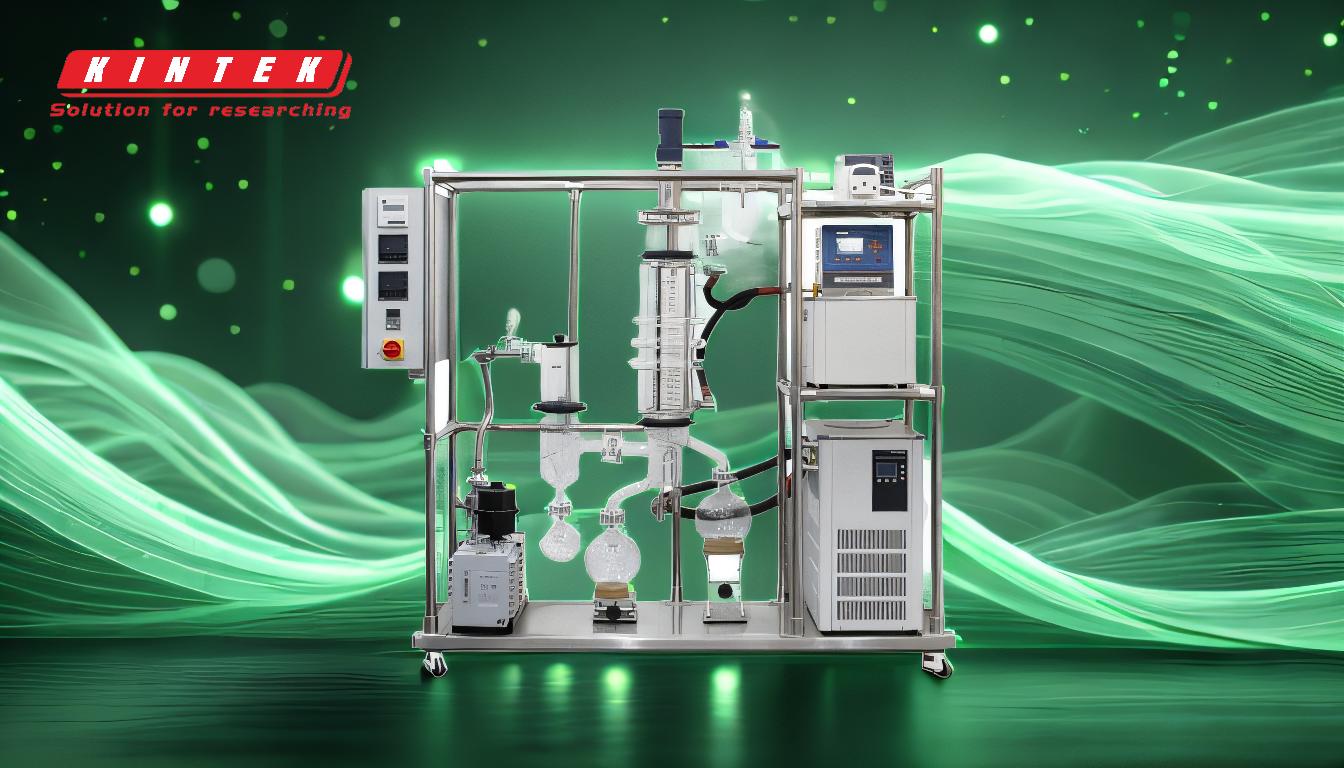Vacuum distillation reduces pressure to lower the boiling points of substances, enabling the separation of compounds at lower temperatures. This is particularly useful for compounds with high boiling points that may decompose at higher temperatures. The process involves creating a vacuum using equipment like a vacuum pump, which reduces the pressure inside the distillation apparatus. As the pressure decreases, the boiling points of the compounds also decrease, allowing them to vaporize at lower temperatures. The vapors are then condensed and collected as distillates. This method preserves the quality of the compounds by minimizing heat exposure and preventing oxidation.
Key Points Explained:

-
Principle of Vacuum Distillation:
- Vacuum distillation operates on the principle that reducing pressure lowers the boiling points of substances. This allows compounds to boil and vaporize at temperatures lower than their normal boiling points, which is crucial for substances that decompose at high temperatures.
-
Equipment Used to Create Vacuum:
- A vacuum is created using equipment such as a vacuum pump or an in-house vacuum line. This equipment reduces the pressure inside the distillation apparatus, facilitating the lowering of boiling points.
-
Pressure Reduction Mechanism:
- The vacuum pump or vacuum line reduces the pressure inside the distillation system. For example, at sea-level atmospheric pressure (1000 mbar), water boils at 100°C, but at 45 mbar, substances can be distilled at much lower temperatures.
-
Lowering Boiling Points:
- By reducing the pressure, the boiling points of the components in the mixture are lowered. This means that the components can be vaporized at much lower temperatures, which is beneficial for heat-sensitive compounds.
-
Vaporization and Condensation:
- Once the pressure is reduced and the boiling points are lowered, the components in the mixture begin to vaporize. These vapors are then condensed back into liquid form and collected as distillates.
-
Preservation of Compound Quality:
- The lower temperatures used in vacuum distillation help preserve the quality of the compounds by minimizing heat exposure. This is particularly important for compounds that are sensitive to high temperatures and may degrade or decompose.
-
Prevention of Oxidation:
- The vacuum environment removes oxygen from the system, which helps prevent oxidation. This is crucial for maintaining the quality and stability of the compounds being distilled.
-
Applications of Vacuum Distillation:
- Vacuum distillation is widely used in industries where high-purity samples of compounds are required, especially for compounds with high boiling points that are prone to decomposition. It is also used in the food and beverage industry to preserve the taste and quality of ingredients.
-
Control and Regulation of Vacuum:
- The vacuum can be controlled manually or automatically using a Vacuum Controller. This allows for precise regulation of the vacuum pressure, optimizing the distillation process and extending the lifespan of the vacuum pump.
-
Combination with Other Distillation Techniques:
- Vacuum distillation is often combined with other distillation techniques such as steam or fractional distillation to enhance the separation of aromatic compounds and improve the efficiency of the distillation process.
By understanding these key points, one can appreciate how vacuum distillation effectively reduces pressure to achieve the desired separation of compounds at lower temperatures, preserving their quality and integrity.
Summary Table:
| Key Aspect | Description |
|---|---|
| Principle | Reduces pressure to lower boiling points, enabling separation at lower temperatures. |
| Equipment | Uses vacuum pumps or in-house vacuum lines to reduce pressure. |
| Pressure Reduction | Lowers pressure (e.g., 45 mbar) to significantly reduce boiling points. |
| Vaporization & Condensation | Compounds vaporize at lower temperatures, condense, and are collected as distillates. |
| Quality Preservation | Minimizes heat exposure, preventing decomposition of heat-sensitive compounds. |
| Oxidation Prevention | Removes oxygen, maintaining compound stability. |
| Applications | Used in industries requiring high-purity samples and food/beverage preservation. |
| Vacuum Control | Controlled manually or automatically for precise pressure regulation. |
| Combination Techniques | Often paired with steam or fractional distillation for enhanced separation efficiency. |
Discover how vacuum distillation can optimize your processes—contact our experts today!















